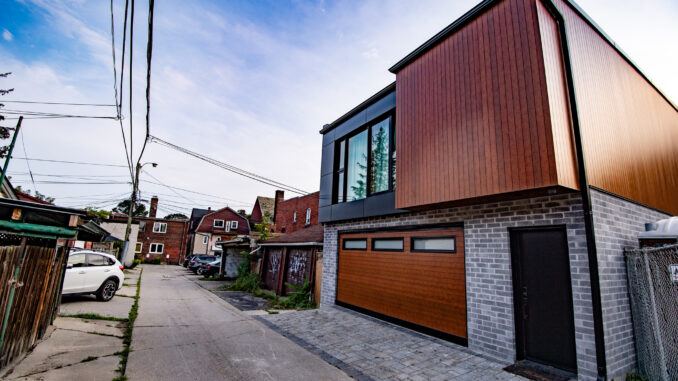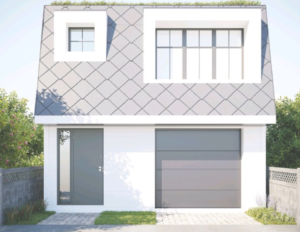
By Ziyad Benhaddad
The housing market in greater Toronto has changed over the years. Studies have shown that over the last 25 years, housing affordability has decreased. Ontario is one of the provinces that welcomes the most immigrants in Canada, lack of affordable housing is an important problem according to experts.
Laneway housing is a new solution for this issue. “Laneway house” is a small, detached apartment above a garage that is secondary to the main house. It creates opportunities to increase the diversity of rental units in low-density neighbourhoods by providing. Anthony Chiechi, a RE MAX sales representative who specializes in buyer brokerage, thinks it’s a really good alternative if the former is unattainable.” It’s common, it offers a good alternative. As good housing as a condo, and it’s definitely a good stepping stone.”

Home-owners have to apply for rezoning in order to fit into the criteria. The city of Toronto is aware of the housing affordability landscape as it is offering programs to help fund laneway housing. The Affordable Laneway Suites Pilot Program provides funds in the form of a forgivable loan of up to $50,000 for eligible property owners developing a laneway suite. That loan will be forgiven when the first tenant occupies the suite.
The Wellesley institute conducted a study on housing affordability from 1991 to 2016, as they used shelter to income ratios to determine its classes. They are grouped into affordable (<30% STIR), moderately unaffordable (30-50% STIR), and severely unaffordable (>50% STIR). The research was primarily conducted by Scott Leon and James Iveniuk.
Households living in moderately unaffordable housing have risen from 203,640 households in 1991 to 386,000 households in 2016 and that was a 90% increase. As severely unaffordable has risen, from 86,440 households in 1991 to 205,940 households in 2016, which is a 138 percent increase.
An interesting find was the demographics that were affected by it. Looking at the race aspect of it, Racialized people in the Toronto region have consistently struggled with significantly higher rates of housing unaffordability. The rate of unaffordable and severely unaffordable housing has been roughly ten percent higher between racialized and non-racialized people. In 2016, studies showed that while 75 percent of non-racialized households had housing costs below 30 percent of their income their counterparts averaged around 66%.

The research didn’t stop at race as they factored in age and gender as well. Households led by young people were more probable to face unaffordable and severely unaffordable housing costs. Households being provided by a demographic of 15-24 represent 1.5% of Toronto households. Rates are likely to be higher in this demographic, although most households in the GTA are led by older people.
On the gender side of things, they observed the difference between women-led and men-led households has held steady from 1991 to 2016. It showed no significant progress in achieving gender housing affordability equality.
The greater Toronto area is known for its high-priced market but affordability is arguably at its worst right now. The city of Toronto continues to welcome the most immigrants among Canadian cities by a very wide margin and that could become a bigger issue in the coming years. In the meantime, programs are in place to provide more housing and potential revenue from extra land.

Be the first to comment